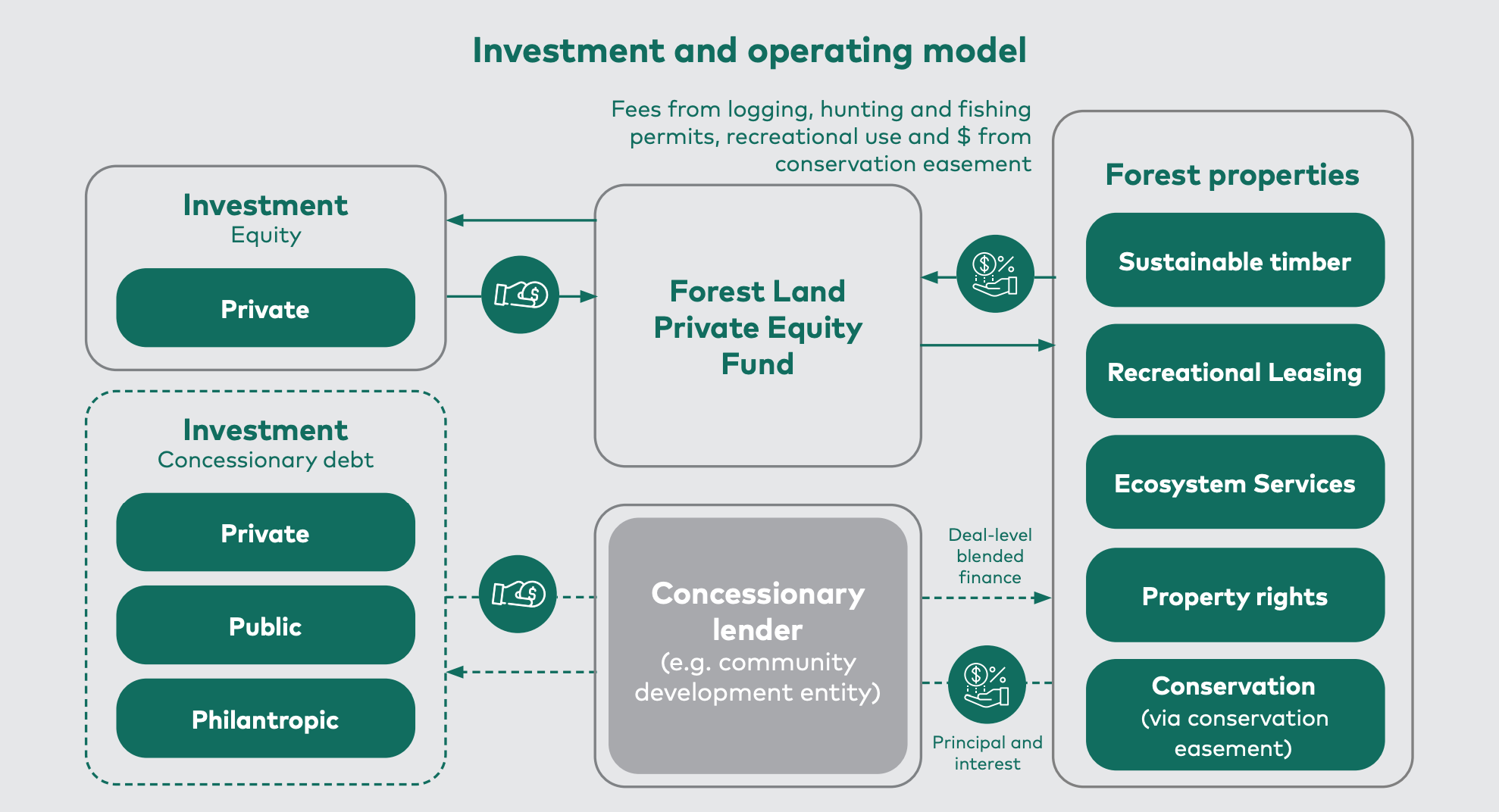Forest land acquisition for sustainable land management
In a nutshell
Investments in sustainable forestry typically aim to conserve and sustainably manage existing forest tracts or restore degraded land.
Cashflows come from sustainable harvesting, payment for ecosystem services, land appreciation, land preservation tax credits, the sale of land rights, and other fees, such as hunting or fishing. This model is innovative because of the institutionalization of the investment vehicles: it provides a viable investment strategy for commercial institutional investors, including pensions and insurance companies.
Investment and operating model
An equity investment fund is set up to acquire land and implement sustainable management programs. In some cases, concessionary lenders can partner with the fund manager to provide loans at a project level.
Conservation land rights are sold to conservation organizations via conservation easements, which grant them the right to restrict land use on land that they do not otherwise own. Most easement schemes allow for ongoing sustainable timber production, which generates income. Other sources of profit include fees from recreational leasing and payment for ecosystem services. Profits are distributed to the investors – typically over 2–5 years – and to the fund manager, as in standard private equity deals.The difference is that the conservation easements, often put in place in the first 1–4 years after a fund acquires the land, provide advantageous early returns for private equity investors.
Impact measurement
Given the enormous complexity of forest ecosystems, outcome measurements may be unique to the forest being managed. Standardized Global Impact Investment Network IRIS metrics for social, environmental, and financial performance may include:
- Attributes of the land: conservation priority characteristics, type of land area, fresh water bodies present, etc.
- Conservation: forest management plan, protected land area, ecological restoration management area, streams restored, coastline restored, etc.
- Benefits and impacts of conservation: ecosystem services, revenue generated at directly supported enterprises, product/service certifications.
Scalability and replication
This blueprint is ready for scaling up across North America, where conservation easements and tax credits exist, and could be replicable across all countries where conservation easements are in place, such as several countries in Latin America, Europe, Africa, and Oceania.
